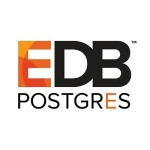What is most valuable?
Monitoring, EM Jobs and IP/BIP Reports
How has it helped my organization?
My company either is outsourced DBA or secondary DBA support. I am able to use EM12c to standardize what would be an almost unattainable goal without the product. With standardized monitoring templates and incident rule sets, we are able to consistently monitor, manage and alert all DBAs in each group to the same level SLA for our customer's needs.
What needs improvement?
We would love to see a migration utility for EM jobs. I've been a proponent for consolidating all database tasks from outside schedulers into Enterprise Manager Jobs. The challenge is if there is an upgrade to EM12c, this must be migrated manually and the interface is almost exactly the same as we had back in EM10g. Some improvements would be greatly appreciated.
For how long have I used the solution?
1 year and 3 months
What was my experience with deployment of the solution?
I do have a number of clients who's primary OS environment is Windows. They have virtualized with this OS and release 3 build of EM12c experienced serious java failures and I had to change the project sign off to release 2. It was a huge "hit" to the initial credibility of EM12c when having to return to two different clients and ask to downgrade to the previous release.
What do I think about the stability of the solution?
The stability of the product is excellent. It is sensitive to network issues, but the problem lies in the network, not EM12c.
What do I think about the scalability of the solution?
High heap usage is a common complaint during top EM job utilization. This is a tuning issue over a scalability issue, but it is impacting to the one receiving the incident notifications.
How are customer service and technical support?
Customer Service: 2 out of 5. I often choose to open an SR as a last resort. My clients just don't have the time it requires to go through an SR process.Technical Support: I would give it a 3 out of 5. There are some service reps that are very helpful and know the product. There are others that I feel I'm wasting my time with and my clients only have me for a set hours per month, so I don't have time to waste.
Which solution did I use previously and why did I switch?
Some of my customers had either customer scripts scheduled through cron schedulers or Windows schedulers. Having all jobs running within the EM12c eases management for any DBA who might not be familiar with my coding style or know where jobs are scheduled. All they need to know is how to log into the EM12c for that client and they are able to mange the environment when I'm unavailable.
How was the initial setup?
Very simple and well documented.
What about the implementation team?
In house- I was the one who implemented.
What's my experience with pricing, setup cost, and licensing?
As this was for clients and I have 12 that I've implemented, I don't have those costs.
Which other solutions did I evaluate?
No
What other advice do I have?
Consider EM12c over third party products. This is built to be very transparent to the Oracle database environment. Other's, such as Spotlight, Foglight, etc. are a secondary layer and this is using the ASH/AWR data, which is less impacting to anything in the database.
Disclosure: I am a real user, and this review is based on my own experience and opinions.














Version is 12c